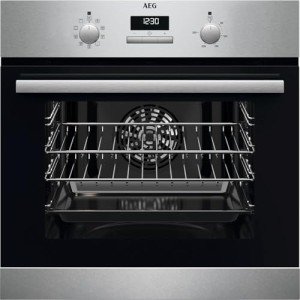
29
JuniHow Single Built In Oven Is A Secret Life Secret Life Of Single Built In Oven
The Comprehensive Guide to Single Built-In Ovens: Features, Benefits, and FAQs
Introduction
In contemporary kitchen areas, the integration of devices is essential to achieving a structured design. Among these home appliances, the built-in oven stands apart as a staple for everyday cooking. In specific, single built-in ovens are acquiring popularity due to their space-saving design and effectiveness. This post checks out the features, benefits, and frequently asked concerns about single built-in ovens, assisting homeowners make informed choices.
What is a Single Built-In Oven?
A single built-in oven is a cooking device created to be embedded within cabinets, supplying a smooth appearance that complements the kitchen's aesthetic. Unlike freestanding ovens, built-in variants provide a series of functions and designs that deal with contemporary culinary requirements.
Key Features of a Single Built-In Oven
Single built-in ovens included a variety of features that boost functionality and user experience. Here are a few of the most essential characteristics:
| Feature | Description |
|---|---|
| Size and Capacity | Usually varies from 24 to 30 inches in width; ideal for numerous kitchen sizes. |
| Cooking Modes | Several settings, including convection, baking, broiling, and sometimes steam cooking. |
| Controls | Digital touch controls or traditional knobs with exact temperature settings. |
| Self-Cleaning Options | Lots of designs consist of self-cleaning functions for much easier maintenance. |
| Energy Efficiency | Developed to consume less energy, typically with an A+ energy ranking. |
| Safety Features | Consists of kid locks, cooling systems, and temperature level sensors. |
| Design Options | Available in numerous surfaces (stainless steel, black, and so on) and designs (modern-day, timeless). |
Advantages of Using a Single Built-In Oven
The adoption of single built-in ovens uses many advantages:
- Aesthetics: They create a modern-day and polished look in the kitchen, mixing flawlessly with cabinets.
- Space-Saving: Ideal for smaller kitchen areas, they are developed to optimize space by being built into walls or cabinets.
- Increased Functionality: Many models feature innovative cooking technology such as wise features that enable push-button control through mobile phone.
- Easy to Use: With user-friendly controls, built-in ovens are user-friendly and appropriate for both newbie and knowledgeable cooks.
- Improved Cooking Performance: Convection models flow hot air for even cooking outcomes.
Popular Brands and Models
Numerous brand names dominate the single built-in oven market, each offering special functions to accommodate customer preferences. Here are some significant ones:
| Brand | Popular Models | Key Features |
|---|---|---|
| Bosch | HBN8451UC, HBL8453UC | European design, convection heat, Wi-Fi connection. |
| Electrolux | E30SO75GPS, E30SO75PPS | Variations in size, advanced grilling capabilities. |
| Samsung | NV51K6650SG | Dual convection, wise technology, flexible cooking modes. |
| Whirlpool | WOS51EC0HS | Cost effective, reliable, self-cleaning functions. |
| LG | LWS3063ST | Smart technology, air fry mode, sleek aesthetic appeals. |
Setup Considerations
Setting up a single built-in oven involves particular factors to consider:
- Measurement: Ensure that the area set aside works with the oven's measurements.
- Ventilation: Adequate air flow needs to be preserved for safety and efficiency.
- Electrical Needs: Check voltage requirements and ensure appropriate electric outlets are offered.
- Professional Installation: While some house owners might choose DIY, employing an expert can mitigate setup problems.
Frequently Asked Questions (FAQs)
How much area is required for a built-in oven?
- A built-in oven generally needs a designated space that varies by design, normally from 24 to 30 inches in width. Always describe the producer's specs for precise measurements.
Can I install a built-in oven by myself?
- While some might try a DIY setup, it is frequently advised to employ an expert to make sure correct fitting, electrical connections, and ventilation.
Are single built-in ovens more pricey than freestanding models?
- Typically, yes. Single built-in ovens tend to cost more due to their design, setup, and additional features.
What are the differences in between convection and regular ovens?

- Stove have a fan that distributes hot air throughout, leading to even cooking. Conventional ovens depend on convected heat, which might result in hot areas and uneven cooking.
What upkeep is needed for a built-in oven?
- Regular cleansing, guaranteeing vents remain unblocked, and www.ovensandhobs.uk keeping an eye on functions. Lots of designs use self-cleaning choices, which streamline upkeep.
Single built-in ovens represent a merging of style, convenience, and efficiency in contemporary cooking areas. With a plethora of functions and models available, these ovens cater to various cooking needs and preferences. Whether you are a hopeful chef or a periodic home cook, acquiring a well-suited single built-in oven can boost your cooking experience while elevating your kitchen's aesthetic. Careful factor to consider of functions, installation requirements, and upkeep will cause a satisfying investment in this vital kitchen home appliance.

Reviews